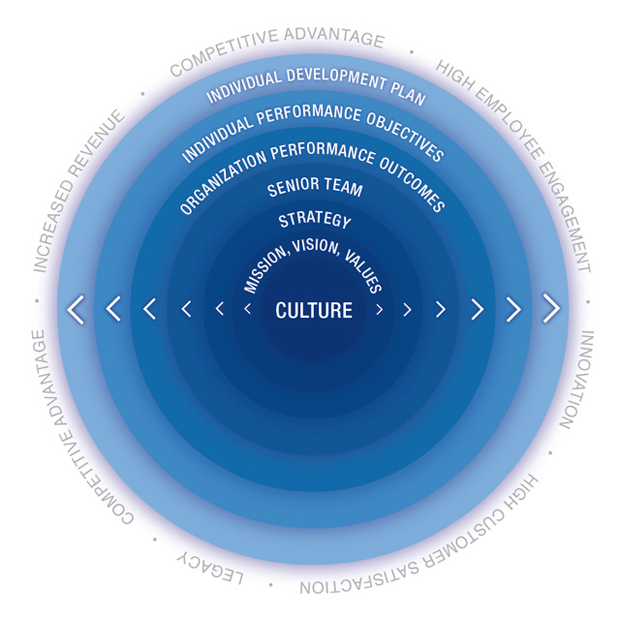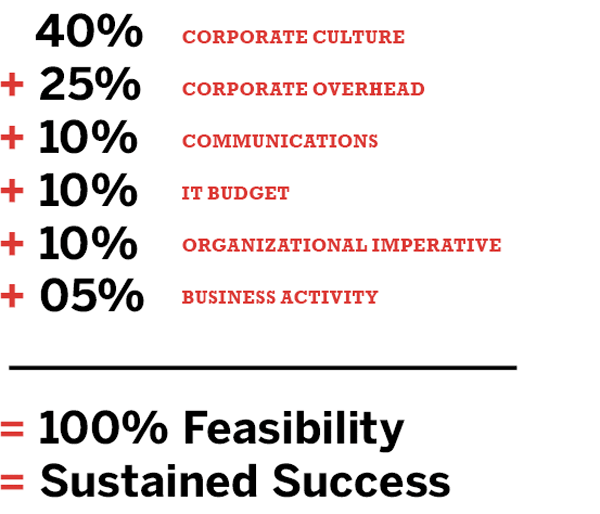What is Corporate Culture?
Corporate culture is one of those focus areas that are not always fully understood.

Corporate Culture Defined
Corporate culture is one of those focus areas that are not always fully understood and are not optimally utilized either in an organization.
A basic definition of organizational culture is the collective way we do things around here. It involves a learned set of behaviors that is
common knowledge to all the participants. These behaviors are based on a shared system of meanings which guide our perceptions,
understanding of events,and what we pay attention to.As Sun Tzu, a Chinese military general from 3000 BC, indicated in his explanation
of strategy,culture forms an integral part of any organizational strategy.It consists of Tao - the created and shared beliefs, values,and glue
that holds an organization together,and it also involves the very nature of the organization.Culture is about individuals in a group sharing
patterns of behavior.There is no cultural absolute. Because culture is relative, we have the power to create a culture that is the best fit for
an organization’s future direction.

Observing Culture
Culture plays out in a variety of ways. We can identify the specifics of it from how information is communicated, feedback is given,
performance is managed, and projects are co-coordinated within the organization.It is reflected in the way the corporation or institution
is structured; whether work is conducted cross functionally or within silos, how the hierarchical levels are set up, and the types of job
titles used. Culture is often defined by the systems that are used, the processes that are followed, and the rituals, symbols, and stories
that abound in the organization. It is even reflected in how meetings are held in an organization.

Corporate Culture as an Obstacle
When working towards company goals or when trying to effect change in the organization, your organizational culture can be the very
thing that trips you up. If insufficient effort is put towards identifying aspects of the culture that may impact on what you are trying to
achieve, then insufficient actions will be taken to circumvent obstacles in a timely manner or harness the way things are done in an
opportune direction. This is best explained through an example.
An organization espouses that “people are our most important asset” as part of its new philosophy. However, employees witness a senior
executive being escorted off site with his belongings by security guards after being laid off. They receive an e-mail explaining
where they will be sitting and who they will be reporting to in the future restructure - with no fore-warning or personal contact.
Training and development opportunities for employees are stopped in order to cut costs. Actions that consistently reflect a certain core
culture will more effectively emphasize to employees what the leadership’s true values are than any widely publicized statement.
If a direction is truly desired, then all actions that will reflect the required culture need to be considered and instituted accordingly.

Aligning Culture for Success
Once a strategy is set for the organization,the way deliverables are produced in the organization needs to be examined and challenged.
This is to ensure that every process is geared towards achieving the strategy.
Every component of the corporate culture needs to underpin what is required from all stakeholders in order to realize the strategic goals.
There must be a reinforcing stream of communications. All the actions in the organization need to translate into the cultural realities.
A culture can be created or reinforced through the use of socialization.Avenues for socialization abound in functions like selection,
placement on the job, job mastery, the measurement and rewarding of performance, and recognition and promotion. Reinforcing a culture can emerge through the stories told and the folklore propagated, most importantly, through the adherence to chosen important values.The key to the success of the above is to ensure that the culture you wish to socialize others into is an ideal one, necessary for breakthrough performance in your work area or organization. If it is not, then you need to involve everyone in the evaluation and creation of a more suitable culture.

Strong Leadership is Required
One of the surest ways to align the culture to the organization’s strategy is to apply leadership practices that are also aligned.The leaders,
at all levels, need to know what the required culture is and then determine ways of establishing practices and procedures in all operations
that'll closely reflect desired culture. They also need role model the very behaviors they wish exhibited by everyone in the organization
and provide the necessary support to others that will enable them to function accordingly as well. Particular attention also needs to be given to all communications.
Leadership needs to be front and center to create a corporate culture that works.








